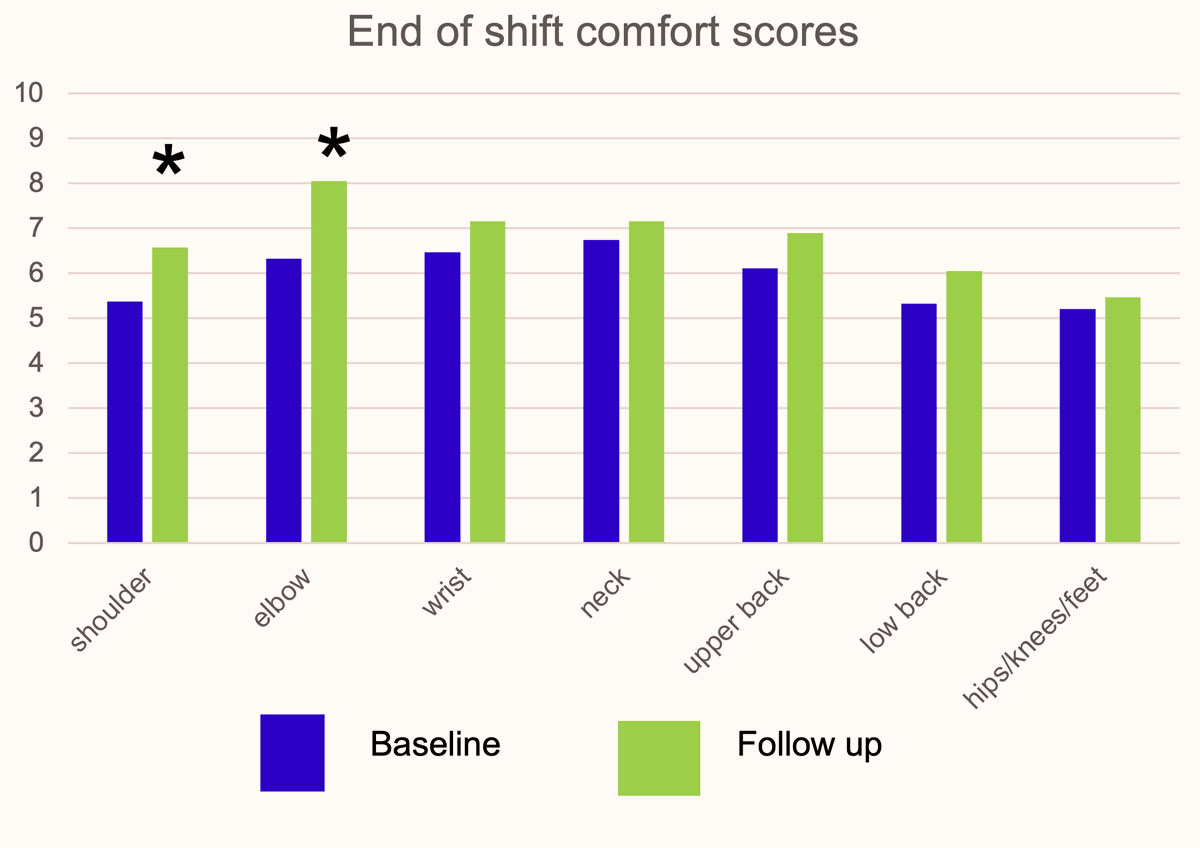
Why Microbreaks Might Be the Most Underrated Ergonomics Tool at Work
A new workplace movement program shows that brief, targeted activity breaks can reduce discomfort, improve performance, and support long-term employee wellness.
- By Carrie Taylor
- Jun 16, 2025
Whether you sit at a computer all day, stand at a machine, or repetitively bend to retrieve cases from a pallet, you’ve probably experienced an ache at the end of the day that reminded you which muscles you’ve overused. Doing anything continuously, or repetitively, for hours at a time, is bound to take its toll. Add in an awkward body position, or a heavy load, and you’re headed for injury. What’s the solution?
An ergonomist will assert that jobs should be designed for humans – none of us are built to sit all day, to lift all day, or to push tight parts together repetitively all day long.
That said, the human body can still benefit from “microbreaks” – very short pauses in the regular work routine that might include some type of activity.
As ergonomists, we’re often asked to create customized stretching programs, so workers who bend forward in the jobs all day can stretch backwards, and workers with their fingers pinching tiny objects can open and stretch their hands. We’ve never felt confident that stretching was the answer. And it turns out, that itchy feeling about “stretching programs” was well-founded. According to a systematic review published by a Canadian organization, the Institute for Work and Health, resistance training is more effective than stretching for reducing injury risk.
Beyond strain/sprain injury prevention, we’ve also learned that some activities will help us age well. Strength, flexibility, balance, mobility, vision, and cardiovascular fitness are all important if our goal is to stay healthy longer in life. Cardiovascular activities don’t fit well in a microbreak format, but the other five components can be presented as very interruptions in your day.
Taylor’d Ergonomics set out to create and pilot a workplace activity program, which we called “Move-it”, aimed at proactively promoting long-term health and mitigating injury risk. We created a slide deck of activities from each of the 5 groups, including exercises for all parts of the body. We chose or designed activities that could be done standing or sitting in a chair (never on the floor). We avoided any activities that would make participants feel self-conscious. We avoided props – no weights, elastics, or other tools. Our image deck includes over 50 microbreak activities.
We have so far piloted the program in an office environment and a factory setting. To evaluate its effectiveness, we surveyed participants to capture their baseline and follow up self-reported microbreak frequency, end of day comfort, self-rated quality, productivity, and engagement.
The client decides how to prompt employees to take the microbreaks. In the office environment, one “champion” emailed an image from the deck to all staff, twice per day. Employees were encouraged to perform the activity at some point during the day.
In the factory setting, the Health and Safety team posted two new images in a high traffic area every day. Participants viewed the images and completed the activity at their workstations after returning from scheduled breaks (5 times per day), and during any downtime that occurred. Designated leaders also facilitated group microbreak sessions during changeovers.
Unsurprisingly, participants in both pilots reported that they took significantly more micro-breaks per day after the program was introduced.
More importantly, end of shift comfort improved for all body parts. Shoulder and elbow comfort scores increased significantly in the factory setting.
Do people feel more productive after microbreaks are introduced? In the factory setting, self-rated productivity increased significantly, from 8.32/10 to 9.53/10.
Do people feel like they are doing better quality work? In the factory setting, self-rated quality trended upward, from 8.42/10 to 9.37/10.
Do people feel more engaged? In the factory setting, participants reported that the likelihood of staying in their job (not quitting) increased significantly, from 8.26/10 to 9.28/10.
Now, imagine the possibilities.
Imagine an initiative that would increase average employee productivity by 15%.
- And increase quality on every job by 11%.
- And improve employee turnover by 12%.
- Without any downtime.
- What economic impact would that have on your organization?

Implementation
To assist our clients in generating enthusiasm around microbreaks, we created “champion training” that provides selected representatives from each department with the skills and knowledge to explain to their coworkers why each activity has been selected. They can help participants to scale the effort levels up as they get stronger, and they can ensure that the program doesn’t get stale and boring. The pilot projects described above did not include this training until after we ran the pilots, so one might hope for even more pronounced results if the champions were equipped with more tools.
I have been surprised by the results that we’ve achieved with this program. I won’t give up on making workplace changes that eliminate musculoskeletal injury hazards, but this has turned out to be a remarkably worthwhile approach while we chip away at the real hazards.
Health and safety leaders can leverage microbreak programs as part of their injury prevention strategy. Start small, measure impact, and build toward a culture that prioritizes proactive physical wellness at work.
References:
Luks, Howard. 2022.
Longevity...Simplified: Living A Longer, Healthier Life Shouldn’t Be Complicated
Institute for Work and Health. 2015. On-the-job resistance training helps prevent musculoskeletal disorders in the neck, arm, shoulder and hand: IWH review https://www.iwh.on.ca/media-room/news-releases/2015-nov-12, Accessed on May 14, 2025
About the Author
Carrie Taylor, M.Sc., CCPE, CPE, R.Kin., is the founder of Taylor’d Ergonomics Incorporated, an ergonomics consulting and training company that celebrates its 30th anniversary this year. She is a Certified Professional Ergonomist in Canada and the US, and she leads a team of 6 ergonomists, spread between London, Stratford, Cambridge, Hamilton, and Mississauga. She can be reached at email [email protected].